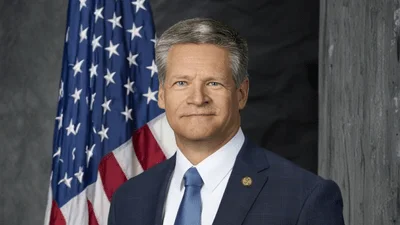Good morning. Welcome to Washington. Thank you, Brian [Wynne], for the introduction – and for your outstanding leadership at the Electric Drive Transportation Association. Thank you, Rick [Kasper], the EDTA Board of Directors, and all the utility, automotive, and logistics companies your coalition represents. Because of your hard work, the status quo on America’s roadways is beginning to give way to a future in which electric and hybrid vehicles are the norm, not the exception – a future in which my Buick Regal will be a classic.
There is little doubt that we’re meeting at a tipping point for the electric vehicle industry. For a century, Americans planned and paved a transportation system that reflected a single, unquestioned assumption – the belief that the world’s supply of cheap oil was endless.
Today, we know this just isn’t true. Gas prices are skyrocketing. Families feel the pain at the pump. They pay more for transportation than for food, education, health care, or anything else in the household budget besides housing. Other imperatives – like responsible stewardship of our air and climate – are on Americans’ minds like never before.
Clearly, our transition to a clean energy economy won’t happen overnight. But because of President Obama’s leadership and your hard work, we’re on the path toward energy security. We’re on the verge of a new kind of transportation system for a new century – not just because it’s the right thing for America, but because it makes economic sense for American families and businesses.
How is President Obama’s administration changing America’s policies and actions to reflect this recognition? We’re making conventional cars more efficient. We’re supporting R&D across the electric vehicle value chain. We’re creating a market that will encourage manufacturers to design more fuel-efficient vehicles. We’re putting Americans to work building a cleaner, greener transportation system.
Let me take these one at a time. First, after three decades without raising fuel-efficiency requirements, we finally put in place a national, 35.5 miles per gallon standard, which new cars and light trucks will be required to meet by 2016. This landmark accomplishment will lead to savings of 1.8 billion barrels of oil. Just to put that in perspective, it would take Libya more than three years to produce the same volume. And later this year, we will finalize the first-ever fuel standards for heavy-duty trucks, which will save even more.
Second, we’re creating the conditions that will help America put 1 million electric vehicles on our roads by 2015. To help meet this objective, President Obama proposed a $7,500 tax rebate – available directly at the dealership – for customers who choose hybrid or electric cars.
The administration also is investing in advanced batteries that can power these electric vehicles – investments that are already making a difference. A few years ago, United States businesses made only 2 percent of batteries for cars like the Chevy Volt and electric Ford Focus. Just a few years from now, American workers will be responsible for 40 percent of the world’s automotive battery manufacturing.
For our part, the Department of Transportation is expanding access to the critical charging stations that are essential to our evolution from gas to electric transportation. Through our TIGER program – that’s Transportation Investments Generating Economic Recovery – we helped pay for an Oregon-based pilot program, which will install direct current fast charge stations every 50 miles along the I-5 corridor – that’s 42 stations in all. We’re even looking at ways to set up a charging station at the Department of Transportation right here in Washington.
Third, we’re creating a market for electric and hybrid cars so that auto companies will have an incentive to design and build more of them. One group that's leading by example on this is the federal government. Right now, the government’s fleet includes more than 600,000 vehicles. This means that we’ve got a lot of purchasing power – and the opportunity to boost clean energy technologies.
In only two and a half years, the federal government has doubled its stock of hybrid cars and trucks. President Obama has directed our departments and agencies to make sure that, by 2015, 100 percent of the vehicles we buy are fuel-efficient or clean energy. And in order to make this happen, the 2011 budget compromise, which the president signed last week, includes an important new provision that gives the General Services Administration new authority to purchase and lease these vehicles.
But the private sector has a major role to play as well. That’s why, a few weeks ago, President Obama, Secretary of Energy Steven Chu, and I launched the Clean Fleets Partnership at the UPS customer center in Landover, Maryland. Every year, commercial drivers buy and burn 4 billion gallons of fuel. Through this partnership, we hope to cut this amount significantly by replacing gas and diesel trucks with advanced technology vehicles – which operate at as little as one-quarter the cost. Fortune 500 companies like UPS, FedEx, AT&T, Verizon, and PepsiCo are already leading the way because they understand how important – and profitable – this is.
Finally, we’re making a broader effort to improve efficiency across America’s transportation network. We’re making historic investments in high-speed rail, transit, and walk-able, bike-able streets so people have the option to drive less, which is good for their health, wallets, and environment.
We’re accelerating aviation’s transition from the radar-based navigation system of the last century to the satellite-based system of the next century. This will dramatically boost fuel economy by allowing aircraft to fly more directly from origin to destination.
We’re encouraging freight carriers to shift products from less to more fuel efficient systems – from air to trucks, from trucks to rail, or from rail to ships. This is essential to achieving President Obama’s goal of doubling the United States’ exports by 2014 – another major job-creator.
Each of these steps represents the type of partnership between business and government that makes our economy stronger and more productive. As President Obama says, it’s not the government’s obligation to be the engine of innovation and prosperity in America. That’s your job. But government does have the ability to support research, discovery, and development, which has always led to breakthroughs and new products. It’s in our national interest to make these investments at the same time as we live within our means.
Ultimately, we are at that tipping point I talked about. The question isn’t whether America will move to a cleaner, greener, more efficient, and less costly transportation system. The question is when.
So, my message for you is this: If we work together, we can take control of our destiny. We can build a 21st century transportation system that uses less petroleum, sends fewer of our hard-earned dollars overseas, emits less of the carbon pollution that threatens our environment, all while spurring economic development, opportunity, and competitiveness.
We’re counting on your great ideas. We’re counting on your enterprising spirit. We’re counting on your leadership. We’re counting on your partnership. Together, we will make the promise of America’s electric vehicle industry into reality. Thank you very much.









